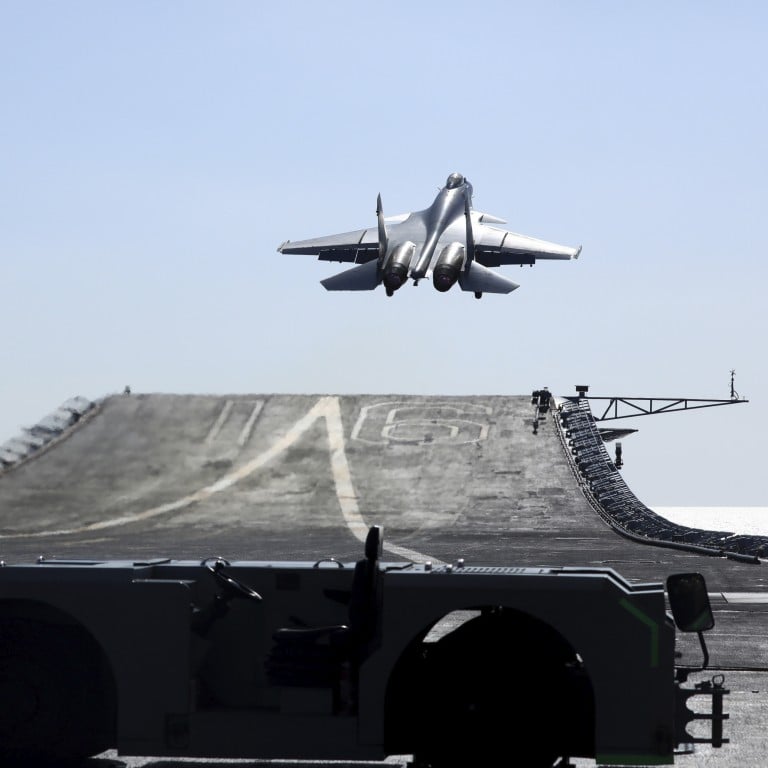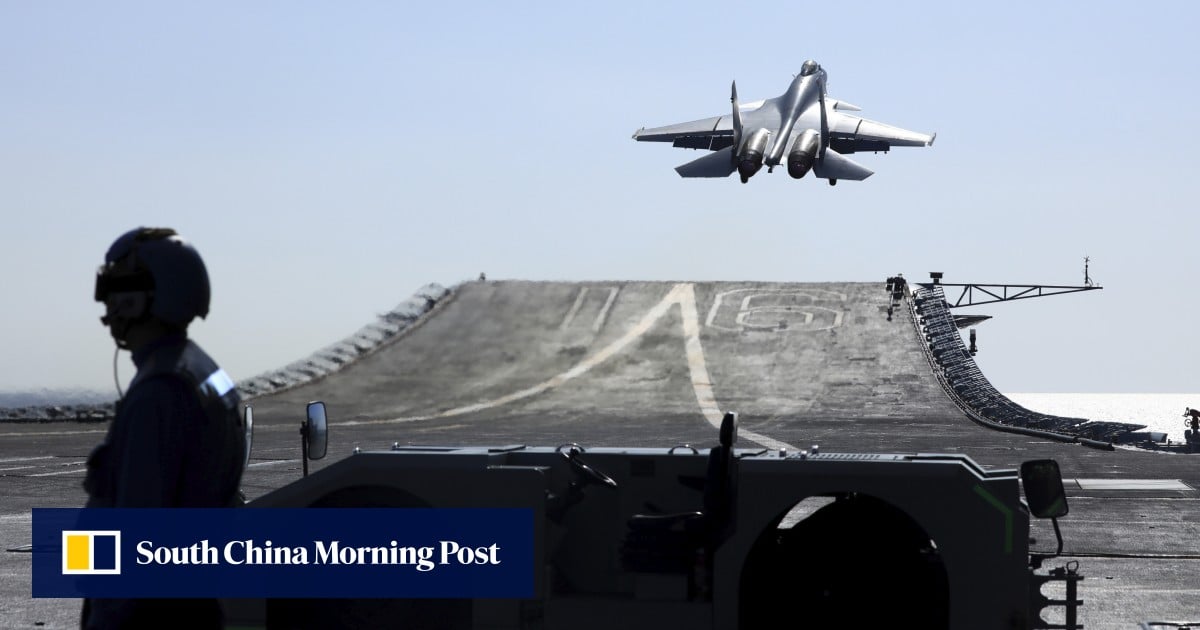
China’s electric car scientists create powerful electromagnetic catapult for aircraft carriers
-
Chinese scientists have created an electromagnetic catapult for aircraft carriers using technology similar to electric vehicles
-
-
The system can launch a plane from zero to 70 metres per second in 2.1 seconds, and at a lower cost to traditional catapults
With a working principle similar to the technology used in electric vehicles, the system could slash the cost of the carrier-based aircraft catapult while boosting performance and reliability.
The device can hurtle a 30-tonne plane from zero to 70 metres per second in just 2.1 seconds. That is nearly double the weight of the J-20 stealth fighter, which is currently too heavy for an aircraft carrier.
In comparison, traditional aircraft carrier electromagnetic catapult systems typically require more than three seconds to accelerate a 13-tonne fighter aircraft to 66 metres per second.
“The new catapult system has a small footprint, simple structure, light weight and does not require a complex power supply system,” wrote a team led by Ye Lezhi, an associate professor with the school of mechanical and energy engineering at Beijing University of Technology, in a peer-reviewed paper published in the Chinese academic journal Acta Armamentarii on February 27.
The journal, run by the China Ordnance Society, is one of the most influential academic journals in the field of defence technology in China covering defence, dual-use technology, and interdisciplinary research projects in military and civilian sectors.
The working principle of the device designed by Ye’s team is similar. Before catapulting, a high-power motor drives a heavy flywheel to rotate at high speed. Once the plane is secured on the catapult shuttle, the flywheel passes kinetic energy to a winding wheel, which then yanks the shuttle through a steel cable to apply force to the aircraft’s landing gear, accelerating the aircraft to take-off speed.
The flywheel and winding wheel never touch; instead, an eddy current clutch generates the electromagnetic force that binds them together.
To stop a plane, the flywheel’s spin is simply reversed – no extra gear needed.
Ye’s team has built a prototype, and the test results have confirmed the feasibility of the design, according to their paper.

Ye is a “science and technology star” supported by the Beijing Municipal Government. He holds pivotal roles, serving as the deputy secretary general of the China Electronic Specialty Equipment Industry Association and as an expert making national advanced technology forecasts for the Ministry of Science and Technology.
His team is deeply entrenched in collaborations with Chinese manufacturing sectors, including the car industry.
In recent years, an influx of senior manufacturing experts has joined the ranks of China’s defence technology research and development. The Chinese government’s push for military-civilian integration, though hindered in the past by the technological limitations of civilian products, is now bearing fruit.
China boasts the largest and most complete manufacturing industry chain globally, with a growing number of products – electric vehicles included – surpassing their Western counterparts in technological advancement.
Some Chinese military experts believe that the rapid iteration and large-scale application of these new technologies will not only revolutionise the automotive industry, but also have a profound impact on the military.
Currently, the electromagnetic catapult system for aircraft carriers uses a long, straight track to accelerate the aircraft, with a large number of electromagnetic coils laid around the track to generate thrust for continuous acceleration as the aircraft passes.
The United States, a pioneer in this technology, has equipped its state-of-the-art Gerald Ford-class aircraft carrier with four such electromagnetic catapults.
According to data released by the US Department of Defence last year, the catapult system experiences a major maintenance issue after every 614 take-offs, a stark contrast to the US Navy’s benchmark of 4,000 take-offs.
Even more concerning is the arresting system’s failure rate, with one system malfunction occurring after every 46 landings, implying that a significant portion of fighter jets launched from the aircraft carrier may not return safely.

02:17
China airs footage of Fujian aircraft carrier featuring advanced catapult launch system
Senior US military officials are increasingly voicing concerns about the detrimental impact of the declining US manufacturing industry on the advancement of military technology and equipment.
China’s shipbuilding prowess now dwarfs that of the US, with a capacity 200 times greater, according to the US Navy.

